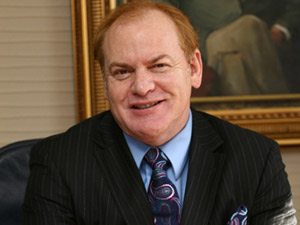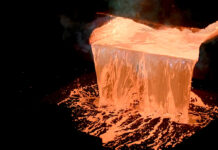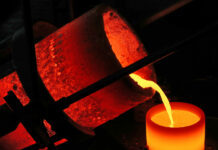
[miningmx.com] – GOLD Fields clawed itself into profit in the September quarter, but remained a company in flux after unveiling plans to restructure and decentralise its new business division, put greenfields projects up for sale, and place two of its mines on a watchlist should they continue to burn cash.
Ominously, it also said that it couldn’t “reliably estimate” the impact of findings of an investigation by the US Securities Exchange Commission (SEC) into a controversial empowerment deal at its labouring South Deep mine, comments that suggest Gold Fields CEO, Nick Holland, and his board face significant trials in the new year.
On the upside, the September quarter registered a strong recovery for Gold Fields operationally, despite conceding in the previous quarter that South Deep would fail to meet its 700,000 oz/year production target by 2016.
It posted a $9m (R63m) net earnings profit for the September quarter on the back of a 10% increase in gold production to 496,000 oz, and a 23% reduction in All-In Sustaining Cost (AISC) basis to $1,089/oz. This is a considerable turnaround on the $129m (R1.2bn) net loss in the June quarter.
Following the acquisition of the Yilgarn South Assets from Barrick Gold Corporation, completed on October 1 in a transaction valued at $300m, Gold Fields’ full-year production target had been upgraded to between 1.9 million oz and 2 million oz, a 90,000 oz to 100,000 oz increase.
South Deep remains Gold Fields’ single largest operational headache, however. The asset – the ownership of which has changed hands many times since development of the mine began in the Nineties – was the subject of more tinkering with the company implementing a new blast regime of smaller but more frequent scope.
A process described as “interrogating and recalibrating’ the production build-up plan was also progressing. Gold Fields would set down new production deadlines for South Deep when it published its December quarter figures in February, it said.
It is suffice to say that annualised third quarter production from South Deep of 327,000 oz means the group is unable to add 370,000 oz over the next three financial years. This is notwithstanding new shift cycles the group implemented with labour earlier in the year.
Once a profit centre of note, Gold Fields’ Ghana assets appear to be on the wane. The group said a decision on whether to continue mining at Damang would be made in the first half of 2014. “If a viable sustainable operational plan cannot be developed for this mine, care and maintenance will be considered,’ it said. Tarkwa’s production would decline to about 550,000 and 500,000 oz during the next two years.
The long-term future of the Darlot mine in Australia, one of the assets in the Yilgarn South acquisition, was also being assessed. Gold Fields disclosed there was cash burn at both Darlot and Damang in the quarter.
Gold Fields has finally given up the ghost on Arctic Platinum. Once unveiled as a revenue diversifier when Gold Fields was under the leadership of Ian Cockerill, the project has shifted in and out of view over the years as Cockerill and then Holland changed their minds on its viability.
Gold Fields said today that Arctic Platinum would be sold along with the majority of some 16 other greenfields developments, such as the Yanfolila project in Mali. A “small nucleus’ of projects would be retained while no decision had been made on actual disposals, it said.
This was part of the break-up of the Growth and International Projects division, essentially a streamlining and decentralising process, in which new business would be considered by “the regions’.
Some $55m would be saved in expenditure in the 2013 financial year and the first half of the 2014 financial year, while overall capital expenditure would be reduced by $180m through a combination of cost-saving measures including a reduction in corporate overheads and the creation of fit-for-purpose operational structures.
Marginal mining was also shut: heap leach operations at St Ives, and low-grade sections at Agnew, both in Australia, had been stopped – changes announced in the previous quarter. There had been a 5% reduction in headcount across the portfolio, Gold Fields said.









